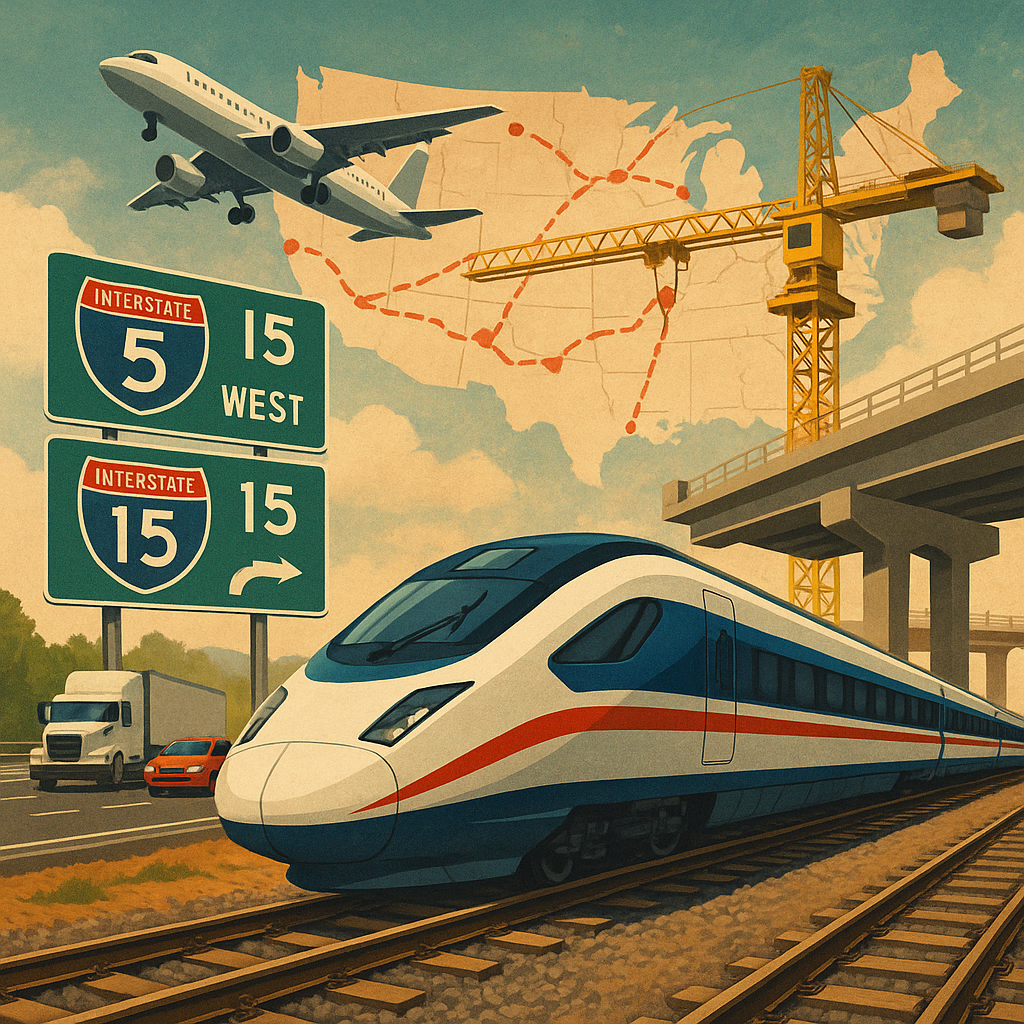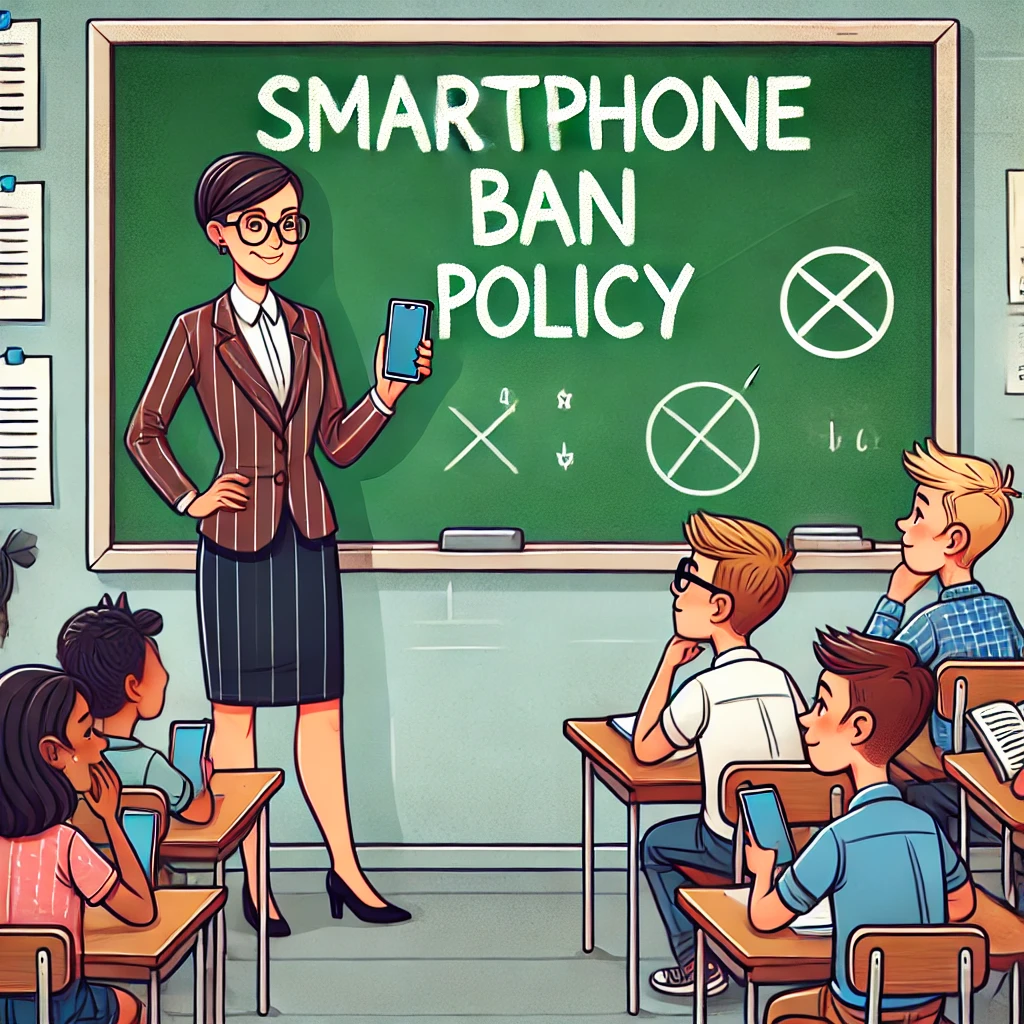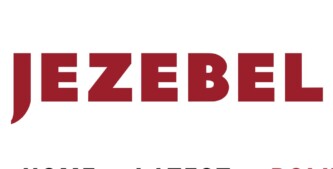The United States has a population of about 340 million people and a lot of highways and airports, but it doesn’t have a high-speed rail (HSR) system yet. Recently, there have been some exciting developments, as the country might soon start building its first high-speed rail lines. Two projects are currently in progress: one is the challenging route from San Francisco to Los Angeles, and the other is the simpler line from Las Vegas to Los Angeles. There are also plans for more connections, like a line from Portland to Seattle and another between Dallas and Houston. However, experts say that progress is slow and uncertain.
Rick Harnish, who works for the High Speed Rail Alliance, believes these projects are important for updating the U.S. rail system. He mentions that the planning for the Portland-Seattle line is moving very slowly, and the Texas line’s future is unclear after a big federal grant was canceled. In comparison, China has a high-speed rail network that will reach over 50,000 kilometers this year, and Europe has built more than 8,500 kilometers of HSR lines. This shows that the U.S. is falling behind in investing in rail infrastructure.
One reason the U.S. doesn’t have high-speed rail is that many people prefer driving cars and are unsure if such projects are necessary. Will Doig, a journalist who covers the rail industry, points out that many Americans are against high-speed rail, especially if it affects their neighborhoods. Additionally, the U.S. government often cuts funding for rail projects, making it harder to create a strong high-speed rail network.
Amtrak, the government-owned train service, doesn’t have any high-speed trains right now, but it plans to introduce new Acela trains later this year. These trains will run on the Northeast Corridor, but only a small part of the route will allow speeds over 150 mph. The California High-Speed Rail project is expected to be finished by 2033 and is managed by California, while the Brightline West line from Los Angeles to Las Vegas is a private project set to open in 2028. Experts believe that for high-speed rail to work in the U.S., people need to change their attitudes towards public transportation, and the federal government must support these projects. However, political issues remain, as recent decisions show a lack of funding for proposed projects.
Original news source: Is the US finally on track to build a high-speed rail network? (BBC)
🎧 Listen:
Slow
Normal
Fast
📖 Vocabulary:
| 1 | infrastructure | The basic physical systems and structures needed for a country or area to function, like roads and bridges |
| 2 | uncertain | Not sure or definite; not able to be predicted |
| 3 | federal | Relating to the central government of a country |
| 4 | grant | A sum of money given by an organization, especially the government, for a particular purpose |
| 5 | investing | Putting money or resources into something to make a profit or achieve a result |
| 6 | journalist | A person who writes for newspapers, magazines, or news websites |
| 7 | corridor | A long passage or route, often used for transportation |
| 8 | managed | Controlled or directed by someone |
| 9 | private | Belonging to or for the use of one particular person or group, not public |
| 10 | attitudes | The way people think or feel about something |
| 11 | funding | Money provided for a particular purpose |
| 12 | proposed | Suggested or planned for the future |
| 13 | developments | New events or changes that improve a situation |
| 14 | challenging | Difficult and requiring a lot of effort |
| 15 | projects | Tasks or plans that require work to be completed |
Group or Classroom Activities
Warm-up Activities:
– CHARADES
Instructions: Divide the class into small groups. Each group will take turns acting out key terms related to the article (e.g., high-speed rail, airport, highway, Amtrak). The other groups must guess the term being acted out without using any words.
– OPINION POLL
Instructions: Have students circulate around the room and ask each other whether they support the idea of high-speed rail in the U.S. Students should record the opinions they gather. Afterward, compile the results as a class and discuss any common themes or differences in opinions.
– MIND MAP
Instructions: In pairs, students will create a mind map on a large sheet of paper. The central topic is “High-Speed Rail in the U.S.” They will branch out with ideas from the article, such as benefits, challenges, and comparisons with other countries. After 10 minutes, each pair will present their mind map to the class.
– HEADLINE CREATION
Instructions: Students will work individually or in pairs to create catchy headlines for the article. They should focus on summarizing the main points creatively. After they write their headlines, they can share them with the class, and a discussion can follow on which headlines are most effective and why.
– FUTURE PREDICTIONS
Instructions: Students will write a short paragraph predicting what the high-speed rail situation in the U.S. will look like in 10 years. They should consider factors such as technology, public opinion, and government support, using information from the article to support their predictions. After writing, students can share their predictions in small groups.
🤔 Comprehension Questions:
1. What are the two high-speed rail projects currently being developed in the United States?
2. Why do experts believe that the progress of high-speed rail projects in the U.S. is slow and uncertain?
3. How does the high-speed rail network in China compare to that of the United States?
4. What reasons do some Americans have for opposing high-speed rail projects?
5. What plans does Amtrak have for high-speed trains in the near future?
6. When is the California High-Speed Rail project expected to be completed, and who manages it?
7. What changes do experts think are necessary for high-speed rail to succeed in the U.S.?
8. How does government funding impact the development of high-speed rail systems in the United States?
Go to answers ⇩
🎧✍️ Listen and Fill in the Gaps:
The United States has a population of about 340 million people and a lot of highways and airports, but it doesn’t have a high-speed rail (HSR) (1)______ yet. Recently, there have been some exciting developments, as the country might soon start building its (2)______ high-speed rail lines. Two projects are currently in progress: one is the challenging route from San Francisco to Los Angeles, and the other is the simpler line from Las Vegas to Los Angeles. There are also plans for more connections, like a line from (3)______ to Seattle and another between Dallas and (4)______. However, experts say that progress is slow and (5)______.
Rick Harnish, who works for the High Speed Rail Alliance, believes these projects are important for updating the U.S. rail system. He mentions that the planning for the Portland-Seattle line is moving very slowly, and the Texas line’s (6)______ is unclear after a big federal grant was canceled. In comparison, China has a high-speed rail network that will reach over 50,000 kilometers this year, and (7)______ has (8)______ more than 8,500 kilometers of HSR lines. This shows that the U.S. is falling behind in investing in rail infrastructure.
One reason the U.S. doesn’t have high-speed rail is that many people prefer driving cars and are unsure if such (9)______ are necessary. Will Doig, a journalist who covers the rail industry, points out that many Americans are against high-speed rail, especially if it affects their neighborhoods. Additionally, the U.S. government often cuts funding for rail projects, making it harder to create a strong high-speed rail network.
Amtrak, the government-owned (10)______ service, doesn’t have any high-speed trains right now, but it plans to (11)______ new (12)______ trains later this year. These trains will run on the Northeast (13)______, but only a small part of the route will allow (14)______ over 150 mph. The (15)______ High-Speed Rail project is expected to be finished by 2033 and is managed by California, while the Brightline West line from Los Angeles to Las Vegas is a private project set to open in 2028. Experts believe that for high-speed rail to work in the U.S., people need to change their attitudes towards public (16)______, and the federal government must support these projects. However, political issues remain, as recent decisions show a lack of funding for proposed projects.
Go to answers ⇩
💬 Discussion Questions:
Students can ask a partner these questions, or discuss them as a group.
1. What is your opinion on high-speed rail systems? Do you think they are necessary in the U.S.?
2. How would you feel if your city started building a high-speed rail line?
3. Do you like traveling by train? Why or why not?
4. What is a benefit of having high-speed trains compared to cars or planes?
5. Do you think the U.S. should invest more in public transportation? Why or why not?
6. How would you feel if high-speed rail construction affected your neighborhood?
7. What is a reason some people might prefer driving cars over taking trains?
8. Do you think more people would use trains if they were faster and more convenient? Why?
9. What is your experience with public transportation in your city or country?
10. How would you feel if you had to choose between taking a train or a plane for a long trip?
11. Do you think the government should prioritize funding for rail projects over other types of infrastructure? Why or why not?
12. What is a challenge that high-speed rail projects might face in the U.S.?
13. How would you feel if you could travel from your city to another city in just a few hours by train?
14. Do you think the U.S. will ever catch up to countries like China and Europe in terms of high-speed rail? Why or why not?
15. What is a way to encourage more people to use public transportation instead of cars?
Individual Activities
📖💭 Vocabulary Meanings:
Match each word to its meaning.
Words:
1. infrastructure
2. uncertain
3. federal
4. grant
5. investing
6. journalist
7. corridor
8. managed
9. private
10. attitudes
11. funding
12. proposed
13. developments
14. challenging
15. projects
Meanings:
(A) Controlled or directed by someone
(B) A person who writes for newspapers, magazines, or news websites
(C) Putting money or resources into something to make a profit or achieve a result
(D) Difficult and requiring a lot of effort
(E) Money provided for a particular purpose
(F) Suggested or planned for the future
(G) The way people think or feel about something
(H) The basic physical systems and structures needed for a country or area to function, like roads and bridges
(I) Relating to the central government of a country
(J) Not sure or definite; not able to be predicted
(K) Belonging to or for the use of one particular person or group, not public
(L) Tasks or plans that require work to be completed
(M) New events or changes that improve a situation
(N) A long passage or route, often used for transportation
(O) A sum of money given by an organization, especially the government, for a particular purpose
Go to answers ⇩
🔡 Multiple Choice Questions:
1. What is the population of the United States?
(a) About 340 million people
(b) About 250 million people
(c) About 400 million people
(d) About 300 million people
2. Which two cities are connected by the challenging high-speed rail route currently in progress?
(a) San Francisco and Los Angeles
(b) New York and Washington D.C.
(c) Chicago and Detroit
(d) Miami and Orlando
3. What is one reason the U.S. does not have high-speed rail?
(a) There are too many railroads
(b) Many people prefer driving cars
(c) The weather is not suitable
(d) There is not enough land
4. What is the expected completion year for the California High-Speed Rail project?
(a) 2025
(b) 2028
(c) 2033
(d) 2030
5. Which train service plans to introduce new Acela trains later this year?
(a) Brightline
(b) Amtrak
(c) Greyhound
(d) VIA Rail
6. How many kilometers of high-speed rail network does China plan to reach this year?
(a) Over 20,000 kilometers
(b) Over 30,000 kilometers
(c) Over 50,000 kilometers
(d) Over 40,000 kilometers
7. What is one of the planned high-speed rail connections mentioned in the article?
(a) Boston to New York
(b) Atlanta to Miami
(c) Seattle to San Francisco
(d) Portland to Seattle
8. What do experts believe is necessary for high-speed rail to succeed in the U.S.?
(a) More highways and airports
(b) Increased car manufacturing
(c) Less funding for rail projects
(d) A change in people’s attitudes towards public transportation
Go to answers ⇩
🕵️ True or False Questions:
1. There are two high-speed rail projects being developed in the U.S.: one from San Francisco to Los Angeles and another from Las Vegas to Los Angeles.
2. The U.S. does not currently have a high-speed rail system.
3. The United States has a population of around 300 million people.
4. Many Americans prefer driving cars and are unsure about the necessity of high-speed rail projects.
5. Amtrak, the government-owned train service, does have high-speed trains but plans to introduce new Acela trains later this year.
6. The California High-Speed Rail project is expected to be completed by 2033.
7. Experts believe that the planning for the Portland-Seattle high-speed rail line is progressing very quickly.
8. China has a low-speed rail network that will reach over 50,000 kilometers this year.
Go to answers ⇩
📝 Write a Summary:
Write a summary of this news article in two sentences.
Check your writing now with the best free AI for English writing!
Writing Questions:
Answer the following questions. Write as much as you can for each answer.
Check your answers with our free English writing assistant!
1. What are the two main high-speed rail projects currently being developed in the United States?
2. Why do some Americans oppose the idea of high-speed rail in their neighborhoods?
3. How does the high-speed rail network in China compare to that of the United States?
4. What is Amtrak planning to do later this year regarding high-speed trains?
5. What do experts believe needs to happen for high-speed rail to succeed in the U.S.?
✅ Answers
🤔✅ Comprehension Question Answers:
1. What are the two high-speed rail projects currently being developed in the United States?
The two high-speed rail projects currently being developed are the route from San Francisco to Los Angeles and the line from Las Vegas to Los Angeles.
2. Why do experts believe that the progress of high-speed rail projects in the U.S. is slow and uncertain?
Experts believe the progress is slow and uncertain due to slow planning processes, unclear futures for some projects, and a lack of government funding.
3. How does the high-speed rail network in China compare to that of the United States?
China has a high-speed rail network that will reach over 50,000 kilometers this year, while the U.S. has no high-speed rail system yet, showing that the U.S. is falling behind in rail infrastructure investment.
4. What reasons do some Americans have for opposing high-speed rail projects?
Some Americans oppose high-speed rail projects because they prefer driving cars and are concerned about how such projects might affect their neighborhoods.
5. What plans does Amtrak have for high-speed trains in the near future?
Amtrak plans to introduce new Acela trains later this year, which will run on the Northeast Corridor, but only a small part of the route will allow speeds over 150 mph.
6. When is the California High-Speed Rail project expected to be completed, and who manages it?
The California High-Speed Rail project is expected to be completed by 2033 and is managed by California.
7. What changes do experts think are necessary for high-speed rail to succeed in the U.S.?
Experts believe that people need to change their attitudes towards public transportation and that the federal government must support these high-speed rail projects.
8. How does government funding impact the development of high-speed rail systems in the United States?
Government funding impacts the development of high-speed rail systems by making it harder to create a strong network when funding is cut or limited, which slows down progress on these projects.
Go back to questions ⇧
🎧✍️✅ Listen and Fill in the Gaps Answers:
(1) system
(2) first
(3) Portland
(4) Houston
(5) uncertain
(6) future
(7) Europe
(8) built
(9) projects
(10) train
(11) introduce
(12) Acela
(13) Corridor
(14) speeds
(15) California
(16) transportation
Go back to questions ⇧
📖💭✅ Vocabulary Meanings Answers:
1. infrastructure
Answer: (H) The basic physical systems and structures needed for a country or area to function, like roads and bridges
2. uncertain
Answer: (J) Not sure or definite; not able to be predicted
3. federal
Answer: (I) Relating to the central government of a country
4. grant
Answer: (O) A sum of money given by an organization, especially the government, for a particular purpose
5. investing
Answer: (C) Putting money or resources into something to make a profit or achieve a result
6. journalist
Answer: (B) A person who writes for newspapers, magazines, or news websites
7. corridor
Answer: (N) A long passage or route, often used for transportation
8. managed
Answer: (A) Controlled or directed by someone
9. private
Answer: (K) Belonging to or for the use of one particular person or group, not public
10. attitudes
Answer: (G) The way people think or feel about something
11. funding
Answer: (E) Money provided for a particular purpose
12. proposed
Answer: (F) Suggested or planned for the future
13. developments
Answer: (M) New events or changes that improve a situation
14. challenging
Answer: (D) Difficult and requiring a lot of effort
15. projects
Answer: (L) Tasks or plans that require work to be completed
Go back to questions ⇧
🔡✅ Multiple Choice Answers:
1. What is the population of the United States?
Answer: (a) About 340 million people
2. Which two cities are connected by the challenging high-speed rail route currently in progress?
Answer: (a) San Francisco and Los Angeles
3. What is one reason the U.S. does not have high-speed rail?
Answer: (b) Many people prefer driving cars
4. What is the expected completion year for the California High-Speed Rail project?
Answer: (c) 2033
5. Which train service plans to introduce new Acela trains later this year?
Answer: (b) Amtrak
6. How many kilometers of high-speed rail network does China plan to reach this year?
Answer: (c) Over 50,000 kilometers
7. What is one of the planned high-speed rail connections mentioned in the article?
Answer: (d) Portland to Seattle
8. What do experts believe is necessary for high-speed rail to succeed in the U.S.?
Answer: (d) A change in people’s attitudes towards public transportation
Go back to questions ⇧
🕵️✅ True or False Answers:
1. There are two high-speed rail projects being developed in the U.S.: one from San Francisco to Los Angeles and another from Las Vegas to Los Angeles. (Answer: True)
2. The U.S. does not currently have a high-speed rail system. (Answer: True)
3. The United States has a population of around 300 million people. (Answer: False)
4. Many Americans prefer driving cars and are unsure about the necessity of high-speed rail projects. (Answer: True)
5. Amtrak, the government-owned train service, does have high-speed trains but plans to introduce new Acela trains later this year. (Answer: False)
6. The California High-Speed Rail project is expected to be completed by 2033. (Answer: True)
7. Experts believe that the planning for the Portland-Seattle high-speed rail line is progressing very quickly. (Answer: False)
8. China has a low-speed rail network that will reach over 50,000 kilometers this year. (Answer: False)
Go back to questions ⇧













